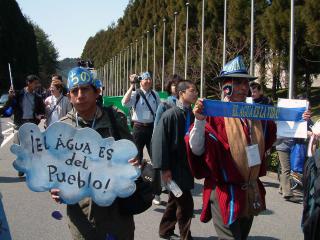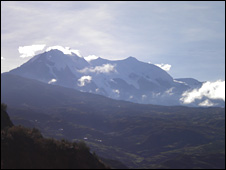Difference between revisions of "Winona sandbox"
| Line 5: | Line 5: | ||
Privatization led to increased prices and lack of access, rather than increased access. In Bolivia, even though much of the major city covered by the documentary was connected up by the global water company, the poor could not afford the connection charges. Some 200,000 people in that city—a quarter of the population—were not connected.[http://www.globalissues.org/article/601/water-and-development. Water and Developement] | Privatization led to increased prices and lack of access, rather than increased access. In Bolivia, even though much of the major city covered by the documentary was connected up by the global water company, the poor could not afford the connection charges. Some 200,000 people in that city—a quarter of the population—were not connected.[http://www.globalissues.org/article/601/water-and-development. Water and Developement] | ||
| − | [[File:Bolivia | + | [[File:Privatization in Bolivia.jpg|frame|Privatization Protest in Bolivia]] |
| + | |||
| + | ===Water Shortages=== | ||
| + | |||
| + | Scientists monitoring the glaciers high in the Andes mountains - a key source of water - say the ice is showing signs of shrinking faster than previously forecast. Faced with a booming population and a combination of glacial retreat and reduced rainfall, the governor of the La Paz region is even contemplating moving people to other parts of Bolivia. Water is already in short supply among the poorest communities and has become a cause of tension. [http://news.bbc.co.uk/2/hi/8394324.stm Glacier Threat to Bolivia Capital] | ||
| + | |||
| + | [[File:Bolivian Glaciers.jpg|frame|Bolivian Glaciers]] | ||
Revision as of 07:20, 7 April 2011
Access to Water in Bolivia
Privatization
Privatization led to increased prices and lack of access, rather than increased access. In Bolivia, even though much of the major city covered by the documentary was connected up by the global water company, the poor could not afford the connection charges. Some 200,000 people in that city—a quarter of the population—were not connected.Water and Developement
Water Shortages
Scientists monitoring the glaciers high in the Andes mountains - a key source of water - say the ice is showing signs of shrinking faster than previously forecast. Faced with a booming population and a combination of glacial retreat and reduced rainfall, the governor of the La Paz region is even contemplating moving people to other parts of Bolivia. Water is already in short supply among the poorest communities and has become a cause of tension. Glacier Threat to Bolivia Capital


